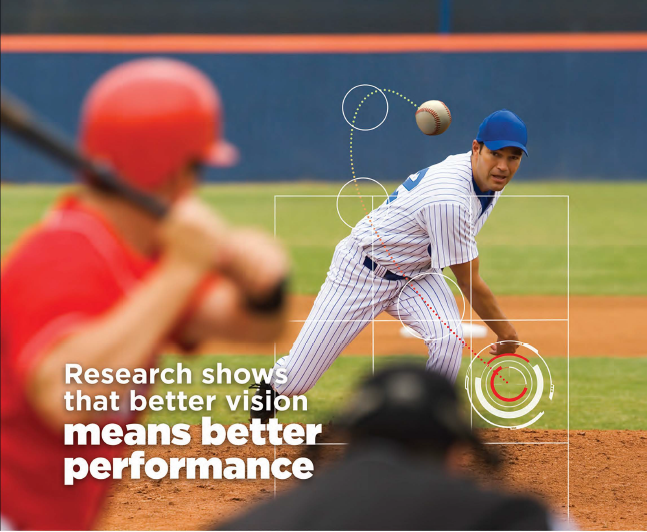
Sports Vision
Research shows that over 80% of what we learn comes from the visual system. That percentage goes up even more when one is talking about sports because the eyes direct the dynamic movement of the body.
The visual skills necessary for peak athletic performance in many sports are:
- Dynamic Visual Acuity: Seeing moving objects clearly
- Eye Tracking: the ability to “keep your eye on the ball”
- Eye Focusing: the ability to change focus from one object to another quickly and clearly
- Peripheral Awareness: seeing out of the corner of your eye
- Depth Perception: the ability to quickly and accurately judge the distance and speed of objects
- Eye-Hand or Eye-Body Coordination: the ability to use our eyes to effectively direct the movements of our hands/body
However, many athletes, even those with top-level performance, do not have optimal vision. Statistics taken from sports vision screenings at the Olympic and Junior Olympic level showed that:
- 30% had less than 20/20 vision
- 25% had decreased depth perception
- 26% had poor eye-hand coordination for the demands of their sport
- 12% had inaccurate eye movement abilities (tracking and able to keep their eyes on the ball)
Athletic trainers, physical trainers, team physicians, college sports medicine departments, and primary-care, general practice, and urgent-care physicians can all benefit from conducting sports vision screenings.
SUGGESTED VISION SCREENERS INCLUDE:
Optec 5000P and Optec 5500P Vision Screeners
- Ideal for pre-screening, to quickly and accurately test patients in a controlled environment
- Perform comprehensive visual screening in minimal time
- Includes one standard slide package
- A sports vision protocol may include tests for:
- Visual Acuity
- Peripheral Vision
- Fusion
- Depth Perception
- Helpful to highlight potential vision issues in athletes who experience loss of concentration, decrease in performance during different stages of play, or problems at night versus day
